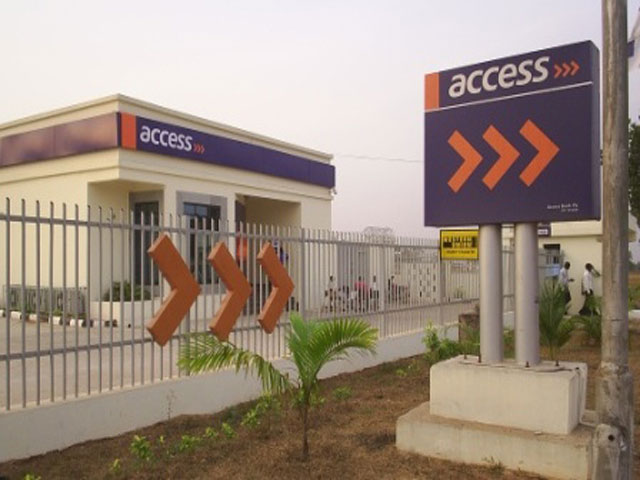Earlier this year, I published an article on Facebook’s digital currency; Diem, and how the company and its partners intended for it to revolutionize the financial services industry around the world. In that article, I outlined some of the issues that the project has been facing from regulatory and consumer perspectives, and how some of the major partners like Paypal, Visa, and Stripe pulled out as a result.
Between then and now, the company has released a new whitepaper outlining a few changes they are making to the project. The changes are so fundamental that it really amounts to launching a new project, which is likely why regulators have been more receptive to it, judging from reports that the project is close to being granted a payment system license by the Swiss Central Bank. The launch is now projected to be in Q2 of this year. If all goes well, Diem could combine the security of Central Bank Digital Currencies with the independence and flexibility of private sector stablecoins.
So, what is different this time? Is this project likely to be a commercial success, and are you likely to be spending Diem to purchase milk and bread in your neighborhood grocery store any time soon?
1. Single Currency Stablecoins
The original plan for the Libra Coin was for it to be a multi-currency token that would be used in different countries on an as-converted basis, such as how you can purchase items in multiple currencies using Bitcoin. According to the new whitepaper, one of the key feedbacks they received was concern about “the potential for the multi-currency Libra Coin (≋LBR) to interfere with monetary sovereignty and monetary policy if the network reaches significant scale and a large volume of domestic payments are made in ≋LBR.”
Unsurprisingly, national governments and their central banks would have been concerned about having a currency out of their control becoming the de-facto currency in their countries. That would rob them of their abilities to use monetary policy to control the economy as in the case of Zimbabwe where the US Dollar (and to lesser extents the South African Rand, Chinese Yuan, and British Pound Sterling) became the default currency as the Zimbabwean Dollar became increasingly worthless due to hyperinflation.
No alt text provided for this image
Yes, this was an actual currency note. When exchanged to the US $, it was worth 40 U.S. cents. Yes, really.
Now the plan is to have separate stablecoins tied to the value of each country in which the project will be operational. In the US, for instance, the Diem Association would acquire reserves of a certain amount and then issue Libra Coin tokens up to the value of the reserves, essentially tokenizing each Dollar in the reserves and making it transferable electronically.
2. Compliance Framework
One of the most strident criticisms of cryptocurrencies is how easily they are used for criminal activities. Although many exchanges and other companies that facilitate cryptocurrency transactions have KYC requirements in place, there’s a reason why virtually all ransomware attacks nowadays demand that the ransom be paid using cryptocurrency.
The new Diem plans intend to remedy that by creating a new compliance framework for financial compliance and network-wide risk management as well as strong standards for Anti-Money Laundering (AML), Combating the Financing of Terrorism (CFT), sanctions compliance, and the prevention of illicit activities.
There will be four tiers of operators holding different licenses for exchanges and other cryptocurrency companies based on the licenses they hold in their countries of operation and the certifications they have received from the Diem Association. Unhosted wallets, which are what most end-users will be able to open, will be at the bottom of the tier and will be subject to balance and transaction limits.
3. Permissionless System
The third major change to the Diem project is that the plans for it to become a DAO (decentralized autonomous organization) where transactions will be executed without an intermediary or centralized controlling body have been abandoned. This is similar to the structure of Bitcoin, Ethereum, and some other popular cryptocurrencies.
In its new iteration, the currency will have a centralized control system that would be controlled by the Diem Association in association with the central banks of the host countries. In fact, it would be a blockchain in name only because instead of a distributed database hosted by anyone who wishes to do so, there will be only a few nodes owned by Diem Association members hosting the entire database, making it easy to make any changes the association wishes to without the need to inform or seek a consensus from the majority of users.
4. Currency Reserves
The original plan was to have each unit of the Diem currency be backed by an equivalent amount of fiat currency, held in cash. Now, the Diem organization intends to hold the reserves in a variety of assets “with very short-term maturity, low credit risk, and high liquidity.” In other words, government bonds and possibly commercial papers from highly secure companies.
There will be a significant amount of money kept in cash which will be lodged in banks and available to provide prompt liquidity for users who want to convert their Libra into cash. The reserve will continue to be the main source of income for the project, however, with the Diem Association members entitled to share the profits received from the assets. If the project were to secure up to 1 Trillion US$ in funds, even a 1% interest rate would net the members up to 10 Billion USD$.
Will It Change The World?
What are the prospects of the new Libra project in its new form? Although many people have called it “watered-down”, the potential is still massive, and it will possibly be even more impactful than any other digital currency to date. Yes, including Bitcoin.
Wholesale Adoption
To start with, the number of users of the Diem Association’s members number in the billions. Facebook alone has around three billion users, which is just under half of the global population. With the launch of the Libra Coin and Facebook’s payment integrations on Facebook and Whatsapp, we could be seeing a significant chunk of that number being onboarded almost automatically, especially given Facebook’s antecedents of integrating its services even when it has to do so forcefully. Even the most generous estimates of Bitcoin wallets in existence place the figure somewhere around 100 million.
Local Payments
Once the necessary licenses have been secured and the operation of the stablecoins is approved, the Libra Coin would likely become a very attractive way for people to transact with the ease of a fully digital currency without the volatility of cryptocurrencies like Bitcoin. When we consider the hostile reaction that widespread Bitcoin usage has received from most governments, it’s easy to see how Libra could be seen as a viable alternative for governments to encourage.
International Payments
The average cost of sending funds cross-border is around 6.5% and that number can enter the double digits in emerging economies, which means that any solution that can bring those costs down significantly would be well-positioned to win a chunk of the global remittances market that reached a peak of $714 billion in 2019 before dipping slightly in 2020. With operations almost fully digital and transactions processing largely pre-programmed into the database, it’s conceivable that operating costs will be significantly lower than for traditional remittance channels. That will likely allow the currency to offer lower costs of transaction and thus gain market share.
CBDC White Labeling
As more countries explore the idea of establishing their digital currencies, the Diem whitepaper contains hints that the Association would be willing to provide the technology to countries to bring their digital currencies into the network faster, in effect creating a joint-venture stablecoin between the country and the Diem Association. For countries with limited technological and financial resources to build out a stablecoin independently, this would likely be a very attractive option.
Carpe Diem
It’s exciting to see the Diem project finally coming to life. As we’ve discussed, the potentials are huge, especially with what appears to be support from regulators. The concerns about privacy still remain, however, as does the fear that it might make private entities capable of exerting an unhealthy amount of control on people’s finances.
In any case, all that needs to happen now is for the Facebook and its partners to seize the day and launch the product so we can test out its features such as transaction speed, security and the like.
Would you use the Libra Coin for your day-to-day activities as opposed to your country’s currency or Bitcoin? Are you concerned about the privacy issues or do you consider giving up personal information just another cost of doing business? Please comment with your thoughts, subscribe to the newsletter, and share with others who would benefit.




